“Merry Christmas” in Italian – How Italians Celebrate a “Buon Natale” [In-depth Guide]
Looking for a guide to a Merry Christmas in Italian? Lucky you, you’ve found it!
If you’re in a hurry and need to know how to say “Merry Christmas” in Italian, let me help you right away it’s: “Buon Natale”.
But if you’ve got some free time and love the end of year holidays… Keep me company! As a certified Christmas fan and Italian, let me tell you about Christmas in the Boot.
We’ll talk about:
- How you say “Merry Christmas” in Italy and other Christmas greetings
- How to say “Happy New Year” in Italian
- How to say “Happy Holidays” in Italian
- Italian Christmas traditions
I am very excited to get started! I do love this time of the year! Before we start, I’d like to give you the best reason to stay until the end. I’ll give you the recipe for one of our favorite Christmas treats! A “Certified A” bonus of Nonna (“grandmother”) quality.
Allora, pronti? Via! (“So, ready? Let’s go!”)
How to Say “Christmas” in Italian – Natale
Natale, the Italian word for Christmas, comes from the Latin word natalis (“birth”). It refers to the birth of Jesus Christ.
Il Natale happens in Dicembre (“in December”), which is in inverno (“in winter”) in Italy. For Italian people, Christmas is about amore (“love”), familia (“family”), amicizia (“friendship”), felicità (“happiness”), generosità (“generosity”), and… buon cibo (“good food”)!
I will tell you more about these later in the post. For now, let’s learn some Italian holiday greetings.
How Do You Say “Merry Christmas” in Italian? Buon Natale
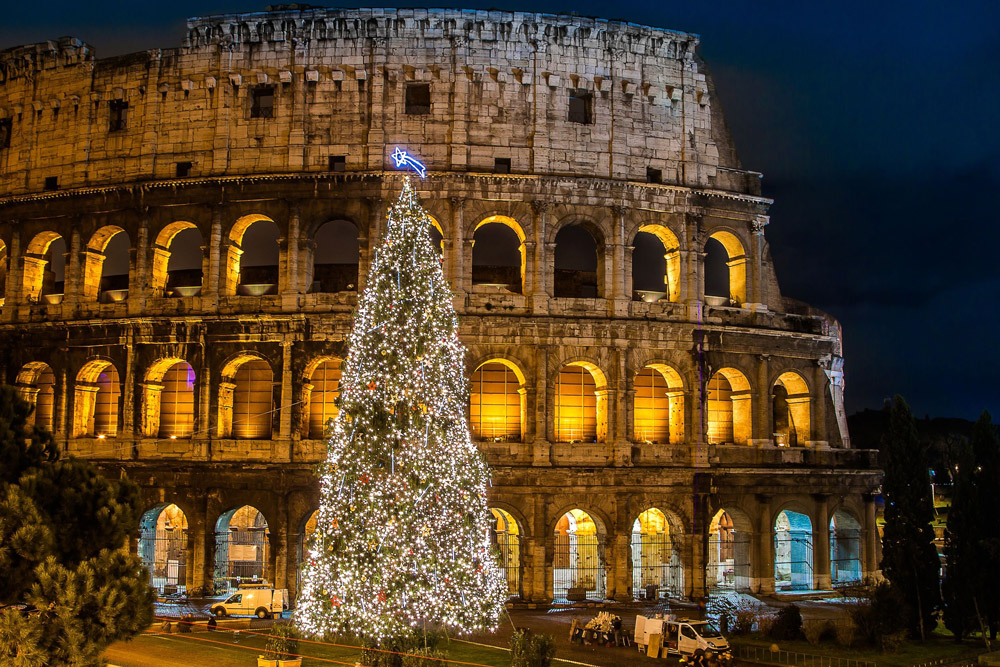
What is “Merry Christmas” in Italian? It’s Buon Natale! In Italian, buon means good, so the literal translation of the expression would be “Good Christmas”.
This is the most common Italian Christmas greeting, but there are a few more ways to wish someone a good end of year holiday.
How to Say Happy New Year in Italian – Felice Anno Nuovo
In Italian, “New Year’s Day” is Capodanno and “New Year’s Eve” is la vigilia di Capodanno. To talk about the new year, Italians say l’anno nuovo or il nuovo anno.
When the clock strikes midnight on December 31st, the greeting Felice Anno Nuovo (“Happy New Year”) resounds all over the Boot.
There are a few interesting New Year traditions in Italy. In the past, people used to throw old things from the window to get rid of the past and welcome the new year with a new spirit.
Nowadays, Italians like to celebrate January’s arrival with dei botti (“bangs”). They make as much noise as possible with fuochi d’artificio (“fireworks”) and petardi (“firecrackers”). According to tradition, the loud bangs help chase bad spirits away.
How to Translate “Merry Christmas and Happy New Year” in Italian – Buon Natale e Felice Anno Nuovo
If the holidays are coming and you want two birds with one stone, wish your Italian friends un Buon Natale e un Felice Anno Nuovo (“a Merry Christmas and a Happy New Year”).
“Happy Holidays” in Italian – Buone Feste
Buon Natale e Felice Anno Nuovo isn’t the only Italian greeting that covers more than one holiday.
When December comes around, use Buone Feste (“Happy Holidays”) when saying goodbye to people you won’t see before the new year.
Buone Feste Natalizie (“Good Christmas Holidays”) works as well. I will tell you more about the feste natalizie later in the post.
Say “Best Wishes” in Italian – Tanti Auguri
Tanti means “a lot” or “many” and auguri means “wishes” in Italian. Together, they stand for best wishes.
Tanti auguri is a very versatile greeting that can be used in any happy situation that calls for good wishes, like birthdays, Mother’s Day, or Christmas. It is also common to only use auguri.
You can make the greeting more suited to the season. Check out these warm and festive spins to auguri and tanti auguri:
- Auguri di Buon Natale – literally “Wishes for a Merry Christmas”
- Auguri di Buone Feste – literally “Wishes for Happy Holidays”
- Tanti Auguri di un Felice Natale a tutti – literally “Best wishes for a Merry Christmas to everyone”
- Auguri di un Sereno Natale – literally “Best Wishes for a Serene Christmas”
While Italy has a strong Catholic population, not all end of the year holidays celebrated in the Boot are related to the Christian religion. Some examples include Chanukah or la Festa delle Luci (“Hanukkah, literally *the Holiday of Lights”) and *Kwanzaa.
Auguri and tanti auguri are good greetings if you’re not sure what holidays others celebrate.
This also works if you use the verb augurare (“to wish”).
Examples:
- Ti auguro un Buon Natale.
- Vi auguro un Felice Anno Nuovo.
Italian Christmas Traditions – Learn Some Vocabulary to Organize Your Merry Christmas in Italian
Now that you know how to say Merry Christmas in Italian, you’re ready to learn how to organize an Italian Christmas! Or at least learn about a few Italian Christmas traditions.
Yes, I’ll talk about food, so keep scrolling.
Before we start, you should know that Italy as a whole hasn’t been around for a long time.
The Boot has a long history of kingdom division, invasion from outsiders, and multiculturality. Even after 1861, the year of the Italian unification, each Italian region has maintained a somewhat unique culture.
Why this bit of Italian trivia? It’s just a little warning: Christmas traditions vary from region to region in Italy. Details like traditional Christmas dishes or characters in Christmas legends might differ in the North and South of the country.
However, all regions share a common point when it comes to the end of year holidays. Italy’s history is closely linked to the Catholic religion, and so are many Italian holiday traditions.
In fact, let’s start with one of those.
I Presepi – “The Nativity Scenes”
Did you know that the nativity scenes displayed on Christmas were first used in Italy? They then spread to other Christian countries.
Un presepe or un presepio (“a nativity scene”) usually features Gesù bambino (“infant Jesus”) in una mangiatoia (“a manger”), Maria e Giuseppe (“Mary and Joseph”), il bue (“the ox”), l’asinello (“the donkey”), i Re Magi (“the Three Wise Men”), i pastori (“the shepherds”), le pecore (“the sheep”), and gli angeli (“the angels”).
Gesù bambino is often placed in his manger on the night between the 24th and 25th of December. The Re Magi are brought closer to the Infant during the Epiphany.
I’ll tell you more about how important this holiday is in Italian culture later in the post.
La Messa della Notte di Natale – “The Midnight Christmas Mass”
La messa della notte di Natale (literally “the Christmas night mass”) used to be very important in Italy.
Nowadays, the tradition has faded among the younger generations. However, you will always find groups of nonne (“grandmas”) going to church for the midnight mass.
L’Albero di Natale – “The Christmas Tree”
What would Christmas be without its albero di Natale (“Christmas tree”)? You might also hear of it as the abete di Natale in Italy. Abete is a word to describe trees that belong to the pine family.
Italians love to decorate their Christmas tree with delle luci (“lights”), delle guirlande* (“garlands”), degli addobbi natalizi (“Christmas decorations”), delle palline di Natale (“Christmas ornaments”) and dei fiocchi (“ribbons”).
On top of the tree goes la stella (“the star”) or il puntale (“the Christmas topper”).
Le Feste Natalizie – “The Christmas Holidays”
In Italy, Christmas isn’t a one-day thing.
As it is originally a religious holiday, Christmas comes after and before other related religious holidays. Not all of them have stuck around, but Italians still celebrate a couple of them.
Italian children may receive un calendario dell'avvento (“an advent calendar”) when December begins. In Bolzano, an Italian city, a gigantic advent calendar takes place every year. It is organized in a building that faces one of the city’s most important places. Each of the building’s windows is covered with numbered panels. Every day, a window is uncovered, revealing a beautiful landscape image.
Italians celebrate la Vigilia di Natale (“Christmas Eve”) with the Cenone (“Christmas dinner”, literally “big dinner”).
The Christmas dinner is so big that fridges and shelves are covered in leftovers for the following week. To tackle the issue, Italians come together to celebrate the day of Santo Stefano on December 26th. It is an occasion almost as important as Christmas itself, and families get together to eat sweets and the Cenone leftovers.
L’Epifania e la Befana – “The Italian Epiphany Tradition”
L’Epifania (January 6th) marks the end of the Christmas holidays in Italy. It is most famous for its special Italian character.
Before the modern introduction of Santa Claus in the Christmas culture, Italian children didn’t get Christmas gifts from a smiling and round-belly grandpa. Instead, they left their shoes or stockings out on the night of the 5th of January for la Befana.
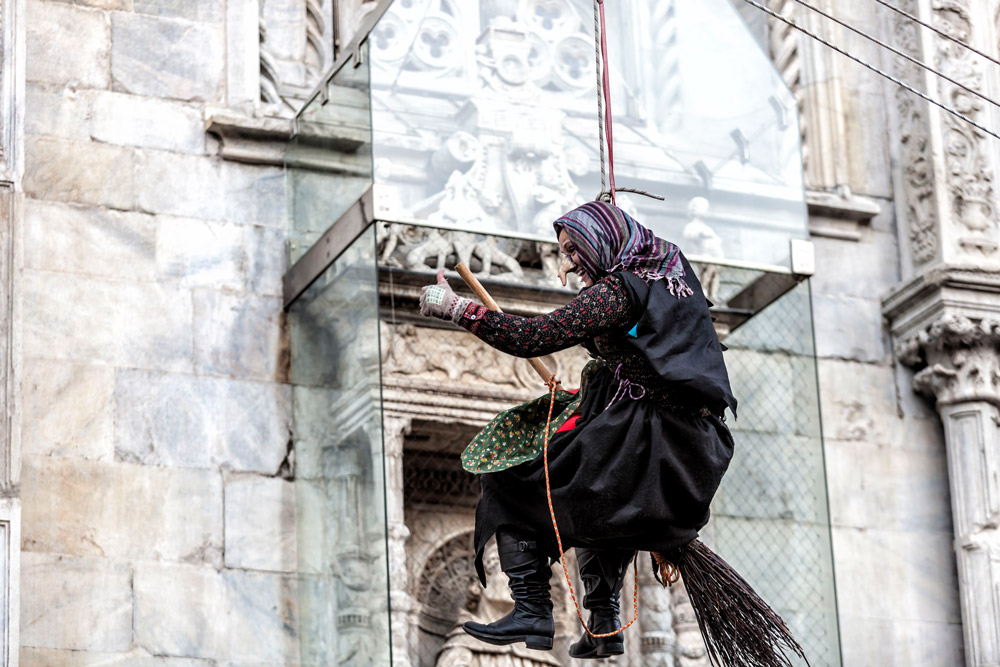
The legend of the Befana goes back to the 13th century in Italian culture. According to the story, the Befana was a witch-like woman who lived in the woods by herself.
One cold winter night, three men knocked on her door to ask her for directions. They introduced themselves as i Re Magi (“the Three Wise Men”) and told her about a very important baby they were going to pay their respect to. They invited the Befana to come visit the infant Christ with them. When she refused, they left to continue their journey.
Soon after, the Befana realized that she should have followed the Re Magi. She packed all sorts of toys and sweets for the Child and climbed on her broomstick to go after the men. Unfortunately, she was not able to find them in the dark night and never made it to the Nativity scene.
Upset, she promised herself that every year on that same night, she would distribute presents and sweets to all good children as a tribute to the Infant. The naughty ones would get carbon as a punishment for their behavior.
All kinds of freaky stories were attributed to the Befana. Parents often used her as a warning to keep children in line. “If you don’t eat your soup, the Befana will come and fill your belly with stones,” they would say.
Nowadays, the Befana is mostly seen as a kind, soot-covered old lady who brings surprises on her broomstick. To honor the legend as closely as possible, some shops sell carbon-looking sweets to fill up rowdy children’s shoes.
The Italian Christmas spirit fades away after January 6. Christmas markets close and decorations are taken down.
Panettone, Pandoro, Pandolce… – Italy’s Darling Christmas Breads
The Italian Christmas Cenone (“dinner”) is not done right if there isn’t at least one type of Christmas bread on the table. Italians have so many of them that it sounds a bit like an obsession at this point.
Shaped like a dome, the panettone is a traditional Christmas treat from Milan. There are many stories behind its name, so there is no way to know for sure how it came to be. However, pane in Italian means “bread” and the suffix -one makes everything bigger! You get the idea. The panettone is tall, fluffy, and rich in candied fruits and dry raisins. As not everyone likes candied fruits, they are sometimes replaced with chocolate chips. It is usually served in long slices with a hot drink or, if you’re having Christmas dinner, some good Italian wine.
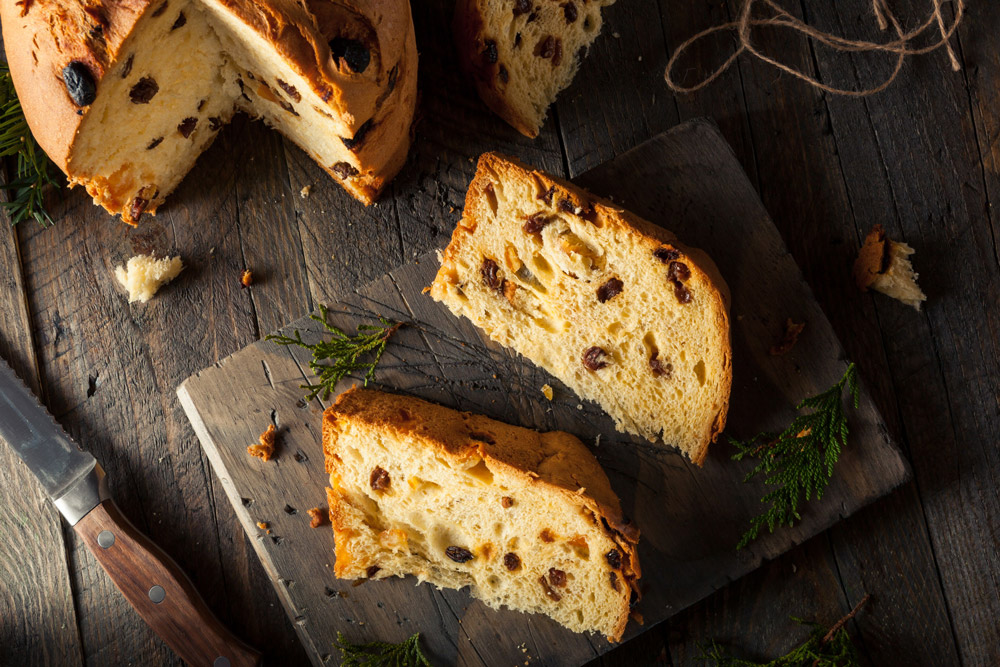
Besides Milan, other Italian cities have their own Christmas bread. Verona, for example, has the pandoro. Its name is a contraction of pane d’oro (literally “bread made of gold”). Fittingly, the pandoro is golden inside. It has an unusual shape for a cake: it looks like a mountain with a flat top and an eight-pointed star-shaped base. It is usually dusted with iced sugar to look like the Alps in winter.
Genoa has the pandolce, from pane dolce (“sweet bread”). You probably know it as the “Genoa Cake”. It is filled with dried fruits and often looks like a gigantic cookie. Tradition has it that the youngest person at the Cenone brings the pandolce to the table, the eldest has to cut it, and the person who prepared it gets the first slice. Nowadays, the pandolce is not often prepared at home anymore. For the sake of the tradition, the nonna (“grandmother”) or the madre (“mother”) might be the first to get their share.
Other Italian Christmas breads include the panforte from Siena, the panpepato from Ferrara, and the pangiallo from Rome.
I told you at the beginning of the post that I wanted to share with you the recipe for one of our favorite Christmas treats.
I am a lady of my word, so here comes the recipe of the pandolce!
Ingredients:
- 85g butter at room temperature
- 100g sugar
- 1 medium egg (55 g)
- 300g flour (type 00)
- 1g salt
- 230 g raisins (rinsed under running water and dried)
- 80g candied orange (cubes)
- 80g candied citrus peel (cubes)
- 20g pine nuts
Preparation:
- Preheat the oven to 180 ° C.
- Mix the butter, sugar, sifted flour, and baking powder in a bowl, possibly with an automatic mixer.
- Add the salt and egg and start kneading at medium speed. Progressively add the milk.
- When you’ve got a homogeneous mix, add the orange, the citrus peel, and the raisins.
- Add the pine nuts. Turn the mixer on again for about 10 seconds at medium speed. Then transfer the dough onto a pastry board and compact it with your hands.
- Give it a rounded shape and lightly press the top of the dough with your hands so as to flatten it slightly. You should get a disc, about 3 cm high and 10 cm in diameter.
- Move the disc to an oven tray covered in cooking paper.
- Make a diamond decoration on the top
- Place in the oven and bake for 45-50 minutes to 180 ° C.
- When ready, remove from the oven and let rest for a few minutes.
Auguri di Buon Natale!
By now, you’re on the way to organizing the merriest Italian Christmas. In reality, you pretty much only have to say “Merry Christmas” in Italian. Italians are a warm and loving people. It’s not the party that makes us have a great time. It’s being all together and sharing happiness and love.







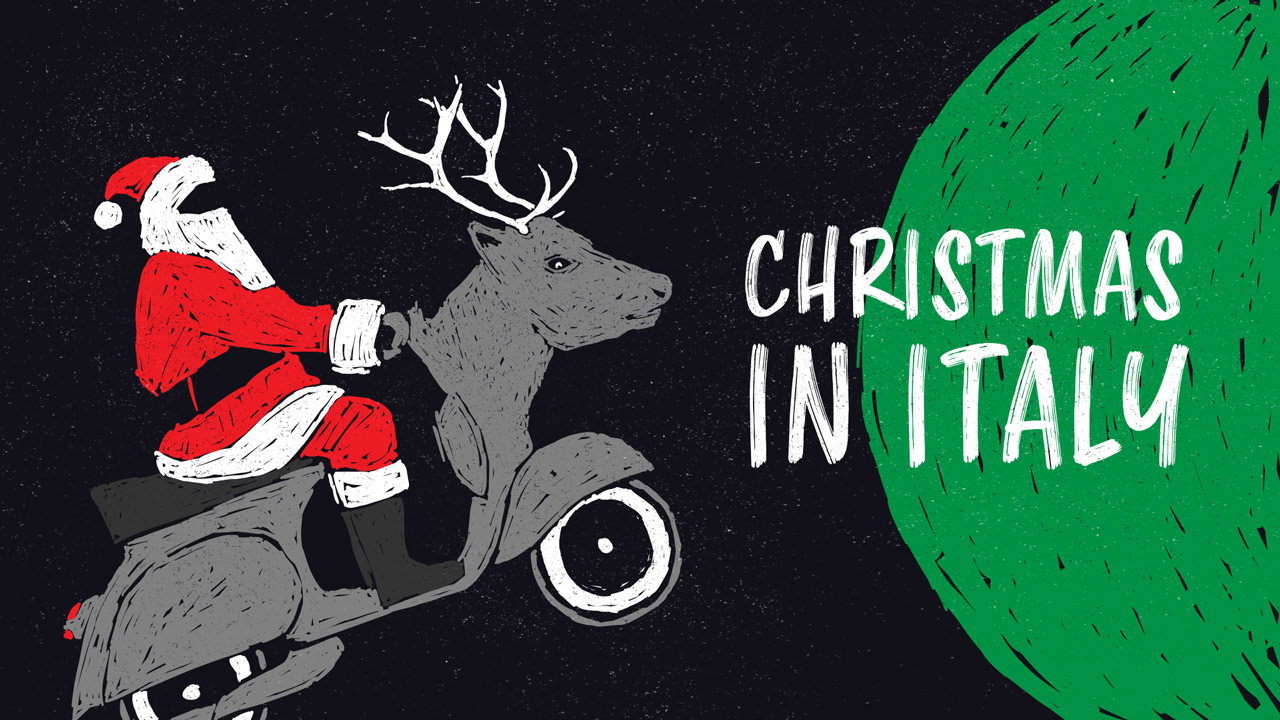
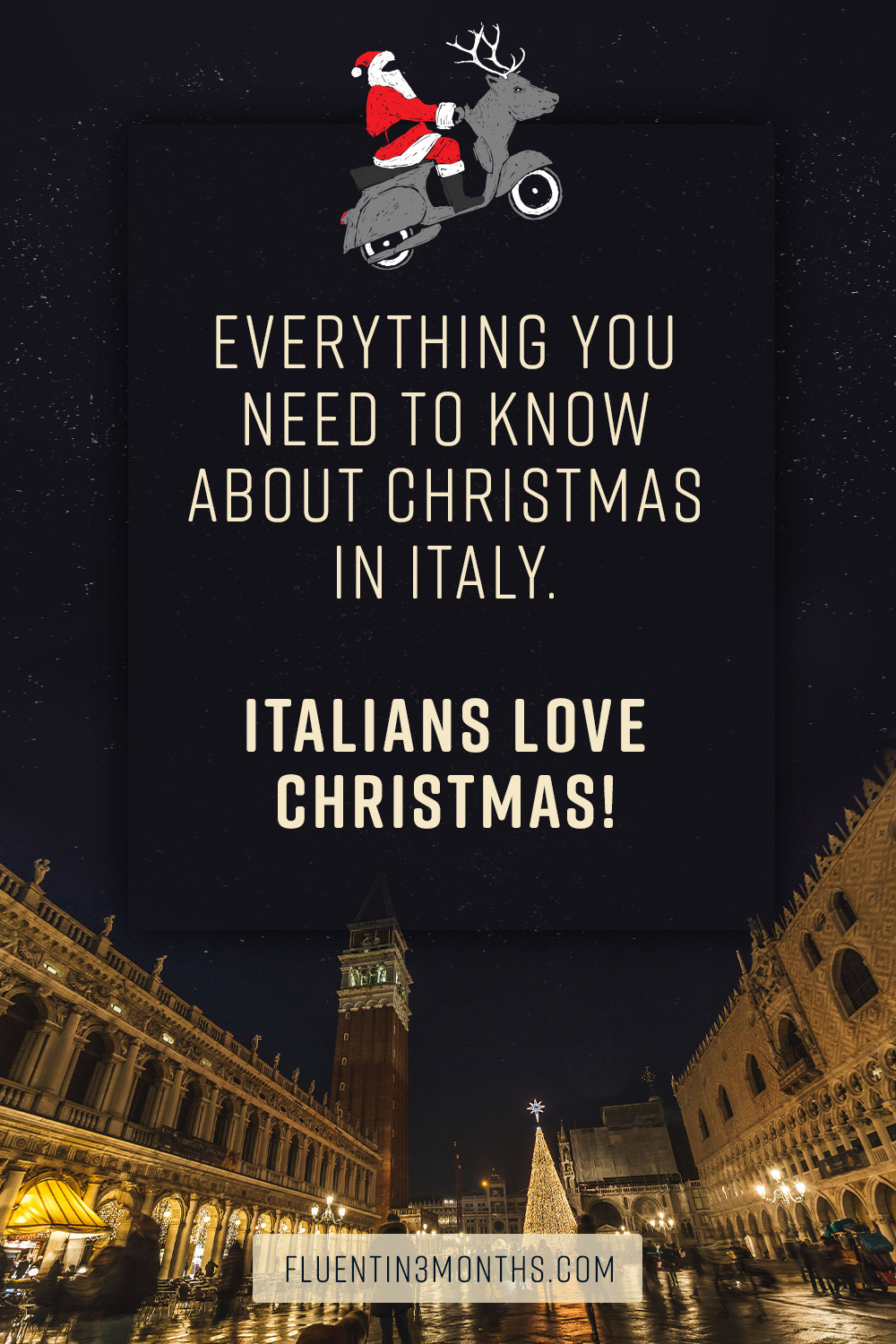

Social